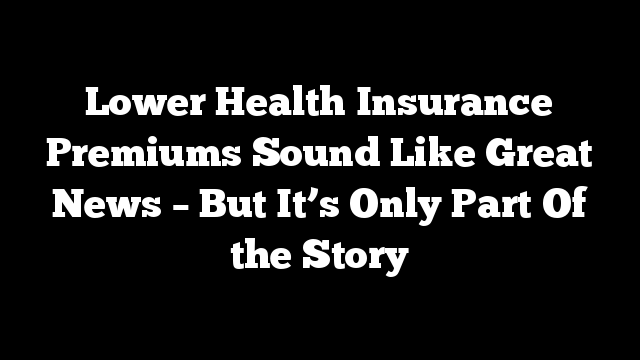
By A. MARK FENDRICK, MD
It’s great news to read headlines that the average health-insurance premium will drop by 4% next year in the 38 states using federal Obamacare exchanges. As millions of Americans entered open enrollment this year to choose their health insurance plans, it is important to remember that premiums are only one of the ways that we pay for our medical coverage.
In
many plans lower premiums (paid by everyone) often mean a higher deductible —
or paying more out-of-pocket before insurance coverage kicks in. This burden is
paid only by those who use medical care services.
Deductibles are rising, and so is the number of
Americans enrolled in so-called high-deductible health plans
(HDHPs). Thus, more people with health insurance are being asked to pay
full price for all their care, regardless of its clinical value. Although
it may be better for many people with significant medical needs (and less
disposable income) to avoid plans with high deductibles, more and more people
who receive health insurance through their employer no longer have a choice
except to choose a plan with hefty costs in addition to premiums.
The Blunt Instrument
Nearly half — 43 percent of adults — who get health
insurance through their jobs have a high-deductible plan, which requires them
to spend between $1,300 (individual) and $2,600 (for a family) before their
insurance starts covering their care.
These numbers should raise concern,
considering 40% of Americans would struggle with an unexpected bill of
$400. Given this simple math, it’s easy to see why Americans with health
insurance increasingly forego the care they need.
One of the goals of deductibles is to encourage consumers to become engaged in their health care purchases. Unfortunately, in their current ‘blunt’ form, they make no actual distinction—in terms of what members are asked to pay out-of-pocket—between high-value medical care and lower-value care, which includes unnecessary tests and the use of expensive, branded pharmaceuticals when generics would suffice.
That’s right: while in the
deductible phase, many HDHP members pay full price for critically important
health interventions (e.g. insulin) as well as for services they don’t actually
need.
This is why it’s important for
consumers to look beyond premiums when they choose their health plan, and not
automatically equate lower premiums with lower total out of pocket costs.
But there is good news: there are
new policies and technologies available to make these plans less blunt.
Thanks
to a rule change being implemented
by the IRS, some 14 crucial health services, including services used to
treat common chronic conditions like diabetes and asthma, can now be covered
prior to meeting the plan deductible for members of HDHPs with health savings
accounts. This is in addition to some preventive care already covered on a pre-deductible
basis by the ACA. Additionally, some health plans are adopting
technologies and programs to help their members afford the medications,
screenings and other healthcare services they need.
The Trend
Toward Higher Value Care
With open enrollment coming to a
close, there is still time to comparison shop to see which plans improve access
to high-value care, and without draining your savings. This is true whether
you’re an HDHP member or not. Some plans offer mechanisms to affordably steer
people toward high-quality care, including:
- Dynamic
pricing for branded pharmaceuticals to treat chronic health conditions, which
means members can lower their copays simply by refilling their prescriptions on
time.
- Insulin
coverage to members with a $0 co-pay at the pharmacy. Insulin is the very
definition of high-value care, so focusing incentives there shows the tide is
shifting away from lower-value products and services.
- For people
whose health insurance is not provided by an employer, options like the
California Individual Market feature lower costs than other plans and
cover many services with a $0 copay.
While not every insurer offers
innovative benefit structures like these, many do. Here are several questions
you can ask to determine whether your plan choice meets your clinical and
financial needs, including:
·
- Will I be able to afford the
out-of-pocket expenses to reach my plan deductible?
- If the plan has a deductible, are there
services that are covered before I meet the deductible?
- Does this plan offer tools and programs to lower
my out-of-pocket payments for medications and other services used to manage
chronic conditions?
Fortunately,
the new IRS rule change is an important step forward to help more people afford
the high-quality care they need.
As
implementation of these value-based insurance designs occurs, it remains
important to become more engaged consumers when choosing a health plan. The
goal of open enrollment should be to choose a plan that covers the care we need
at a total price – not just premium – that we can afford.
—
Learn more about Value-Based Insurance Design here.
Dr. Mark Fendrick is a Professor at the University of Michigan Medical
School and
Director of the Center for Value-Based Insurance Design
The post Lower Health Insurance Premiums Sound Like Great News – But It’s Only Part Of the Story appeared first on The Health Care Blog.
